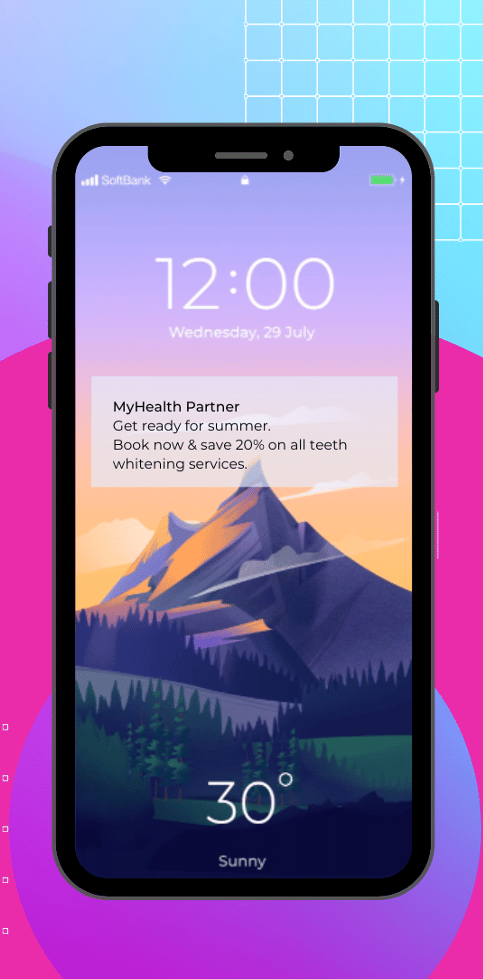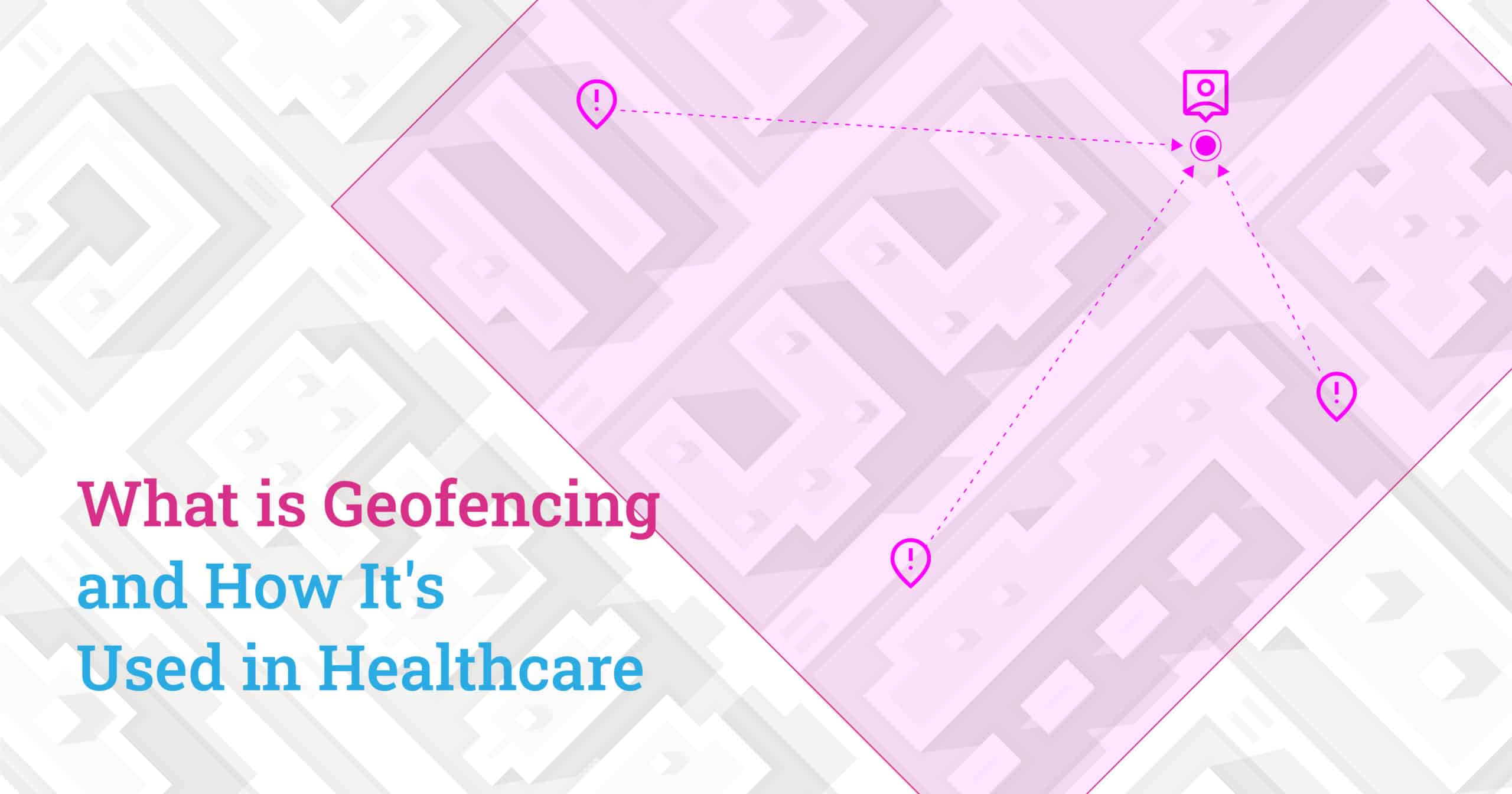Table of Contents
What if you could advertise to patients while they are sitting in your competitor’s waiting room?
What if you could promote your OBGYN practice to those Bridal Expo attendees down the street?
How about offering Indy 500 ticket holders a free consultation at your Low T clinic?
Or, providing your specialty services directly to those referring physicians you just can’t seem to connect with?
With today’s advancements in digital marketing technology, you can do all of the above and more.
Tactics like geofencing leverage location data from mobile devices, allowing healthcare marketers to advertise their products and services to consumers or providers in a specific geographic area.
Adding geofencing into your marketing mix gives you a treasure trove of better location-based opportunities to promote your services/brand and more real-time engagement with your target audience.
In this article, you’ll learn:
- What geofencing is
- Creative use cases of geofencing in healthcare advertising
- Important ethical considerations
- 5 benefits of geofencing for healthcare businesses
- How geofencing fits into your larger marketing campaign
What is Geofencing?
While other forms of digital media like paid search and paid social can target to the city or zip code level, geofencing is a form of programmatic advertising that allows you to target on a building by building basis.
In healthcare, it is most often used to precisely target either healthcare consumers or referring physicians.
This means you can send in-app push notifications, text messages, and targeted programmatic advertisements to consumer or provider devices anytime they cross into, out of, or through a specific boundary.

Do You Need an App to Set Up Geofencing?
No, but apps can help you deliver marketing messages to a hyper-specific audience. If you have a mobile app for your business, you can set up geofencing to send push notifications to those who have your app installed on their mobile device anytime they enter your virtual boundary.
If your business does not have a mobile app, you can still set up (and enjoy the benefits of) geofencing.
What Locations Can You Target With Geofencing?
Unlike real fences, geofences can be any size or shape. These areas can be large and include multiple zip codes, or they can be very small and precise, like an office building, healthcare conference, or event. They can even be a straight line between two points.
This means people are looking for high-quality, local services everywhere, all the time.
Healthcare marketers can set up a virtual boundary around their hospital or medical
practice to target local consumers or providers anytime they’re nearby. They can also
define when their ads appear to ensure they only see their marketing messages during business hours. Ads can then “follow” targeted prospects for set periods (e.g., 30 days).
What’s more, healthcare businesses can also target consumers and providers in and
around their competitors.
Creative Use Cases of Geofencing in Healthcare Advertising
Get inspired by these creative geofencing marketing campaign ideas below:
- Lead Generation
A medical supply company could use geofencing for advertising surgical masks, hospital gowns, uniforms, and scrubs to healthcare professionals at specific hospitals. - Comparative Advertising
- Medical practices and urgent care centers can use geofencing marketing to target healthcare consumers entering competitor practices and centers in the same neighborhood.
- Insurance companies could leverage geofencing around skilled nursing homes to promote low-cost alternatives to residents and their families.
- Event Marketing
- Lead Generation and Brand Awareness
Healthcare marketers could employ geofencing around specific specialty centers to attract more attendees to an upcoming congress, conference, or expo using a special discount. - Healthcare Congresses, Conferences, and Expos
A medical device company could promote its products to healthcare conference attendees, advertise its booth number and location, and offer free demos. - Non-Healthcare Related Events and Conferences
A cosmetic practice could promote its products and services to bridal expo attendees.
- Lead Generation and Brand Awareness
Now that I have your attention let’s talk about how you can leverage this location-based technology to attract consumers and increase patient volume.
But first, a few ethical considerations.
Ethical Considerations
The main ethical concern with location-based ads is privacy. Laws like the California Consumer Privacy Act (CCPA) and Europe’s General Data Protection Regulation (GDPR) protect private consumer data. This data includes any information that can directly or indirectly identify a person (e.g., name, address, phone number, email address, etc.).
Most location-based ads generate anonymous data. However, location data is still categorized as personal information in the CCPA and GDPR.
Healthcare businesses should also be careful to stay within ethical and legal boundaries regarding highly sensitive health topics, such as addiction, HIV, abortion, and others.
5 Benefits of Geofencing Marketing for Healthcare Businesses
Location-based marketing has many benefits for healthcare brands and marketers. They include:
1. Increased foot traffic
Target your local neighborhood as they walk past your office. Share special promotions to increase brand awareness and draw in more traffic.
2. Better crowd engagement
Location-based advertising, like geofencing, allows businesses to share the right content at the right time. For example, companies can drive traffic to their convention booth by promoting when they will hold in-person raffles, live demos, or giveaways.
3. Ability to hyper-target competitors’ customers:
Setting up a virtual perimeter around competitor offices hyper-targets high-value patients in your local community. Healthcare businesses can offer special promotions for first-time patients or promote popular products or services your competitor may not offer.
4. Improved understanding of consumer behavior
Unlike typical online marketing, geotargeted ads allow businesses to collect data about high-intent healthcare consumers in real time. Once enough data is collected, companies can leverage this information to improve their advertising strategies and increase conversions.
5. More cost-effective
You may have heard that location-based advertising is costly. While the average cost-per-thousand ad is higher, the fact that you can hyper-target geographic locations makes them relatively cost-effective. When deployed correctly, geofencing marketing helps businesses reach a large concentration of high-intent consumers or providers, helping you increase sales and revenue.
How Does Geofencing Marketing Fit Into Your Larger, Integrated Marketing Strategy?
The rise of healthcare consumerism has required businesses in every industry to deliver high-quality, personalized experiences online and off. While personalized retention strategies are essential for competing in today’s healthcare market, geofencing allows businesses to target and attract high-quality leads and prospects.
Location-based marketing lets you make the most of your content, campaigns, and promotions. When you send hyper-targeted notifications at the right time and place, you’re focusing on the consumers who are most likely to engage and take action.
For example, a DSO marketing their new All-On-4 dental implant on their website, social media platforms, paid search ads, and landing pages can leverage geofencing to hyper-target their local audience or passersby during business hours. This allows the DSO to be more strategic and maximize its advertising dollars.
Making the most out of your advertising budget is essential for geofencing marketing campaigns as they range from $3.50 to $15 CPM (cost per thousand impressions), whereas the average cost per click on Google Ads is $3.78 to $4.00.
Talk to one of our skilled senior marketing strategists if you want to take your marketing to the next level. We can help maximize your budget and attract high-quality leads to your business by integrating geofencing into your marketing mix.






More Stories
Do you LOVE your dermatologist? Importance of Providers You Can Trust
Changing how Black Americans use life insurance could help shrink the racial wealth gap [Video]
Digital Innovation Spurs Seamless Healthcare Engagement